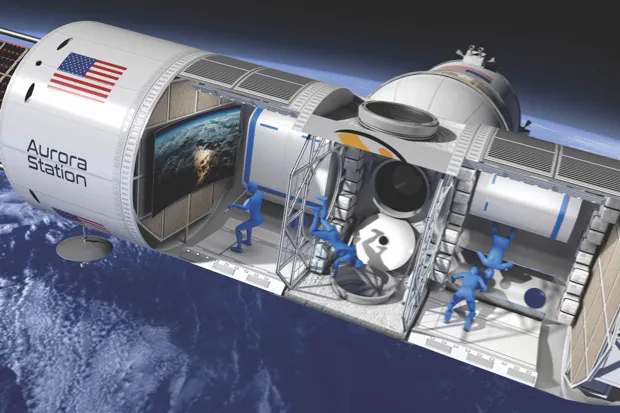The ISS is living on borrowed time. It has had several lifetime extensions before – first taking it beyond 2016, then to 2020, and finally through 2024. But all the signs are that NASA funding will dry up in 2025. NASA hopes that other countries and private companies will take over operating its modules. The trouble is, the ISS costs $3-4bn a year to operate, so it’s not clear how viable this will be. Rumoured alternatives include the ISS being broken up and individual modules sold off to private companies, or it being allowed to fall into Earth’s atmosphere and burn up. One thing we do know for certain is that alternatives are being worked on:
Moon base

The Lunar Orbital Platform-Gatewaybeing developed by NASA and other space agencies, including the European Space Agency (ESA) and Russia’s Roscosmos, will take humans further from home than ever before. Only as long as two London Underground carriages, and a metre wider each side, it is vastly smaller than the ISS, and will have space for only four crew, but at its closest it will pass within3,200km of the lunar surface.
Unlike the International Space Station, which orbits in low Earth orbit (400km), being so far from Earth's atmosphere will prove its own problems. Communication and data will be transferred atonly 1/160,000th of that on the ISS, and protection against cosmic radiation would require heavier, more-costly modules shipped hundreds of thousands of kilometres through space.
Private space stations
Some businesses have their sights set on building their own space stations from scratch. One front-runner, Bigelow Aerospace, has an expandable module, BEAM, that was latched onto the ISS in 2016 (above). The next step for Bigelow will be to launch larger inflatable modules. These units will expand out to 330m3 and it is anticipated that two will be ready for launch by 2021.
Another company is Axiom Space. Its president and CEO is Michael Suffredini, a former ISS programme manager. Axiom also plans to link modules to the ISS before going it alone.
Space station vacations

The next generation of space stations will be designed for tourists as well as astronauts. Houston-based Orion Span plans to offer stays aboard its luxury Aurora Station from 2022. At $9.5m, a trip to low Earth orbit won’t come cheap. The experience will start with a three-month training plan, beginning with an app that it plans to release in 2019. Then it’s off to Orion Span’s facility in Texas, to learn about spacecraft systems and get some weightlessness practice. During the 12-day flight, visitors will be able to experience zero gravity, see the aurora borealis and grow food.
Russian rumours and Chinese certainty

While Russia is involved with the development of Gateway, there have been other reports too. One of these is that Russia plans to hive off some of its most recently added ISS modules in order to create a new station in low Earth orbit. But China has plans too.
In 2011, it launched a space lab, Tiangong-1, which ended service in 2016. A successor, Tiangong-2, was launched in September 2016. China sees both as testbeds for its main project: a large modular space station. A core cabin module is slated for launch in 2020, with the goal of having the station up and running by 2022.
This is an extract from issue 329 of BBC Focus magazine.
Subscribe and get the full article delivered to your door, or download the BBC Focus app to read it on your smartphone or tablet. Find out more
Follow Science Focus onTwitter,Facebook, Instagramand Flipboard
